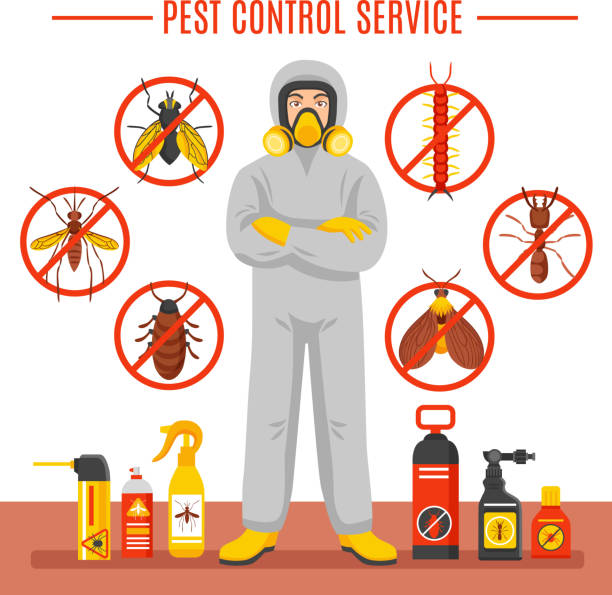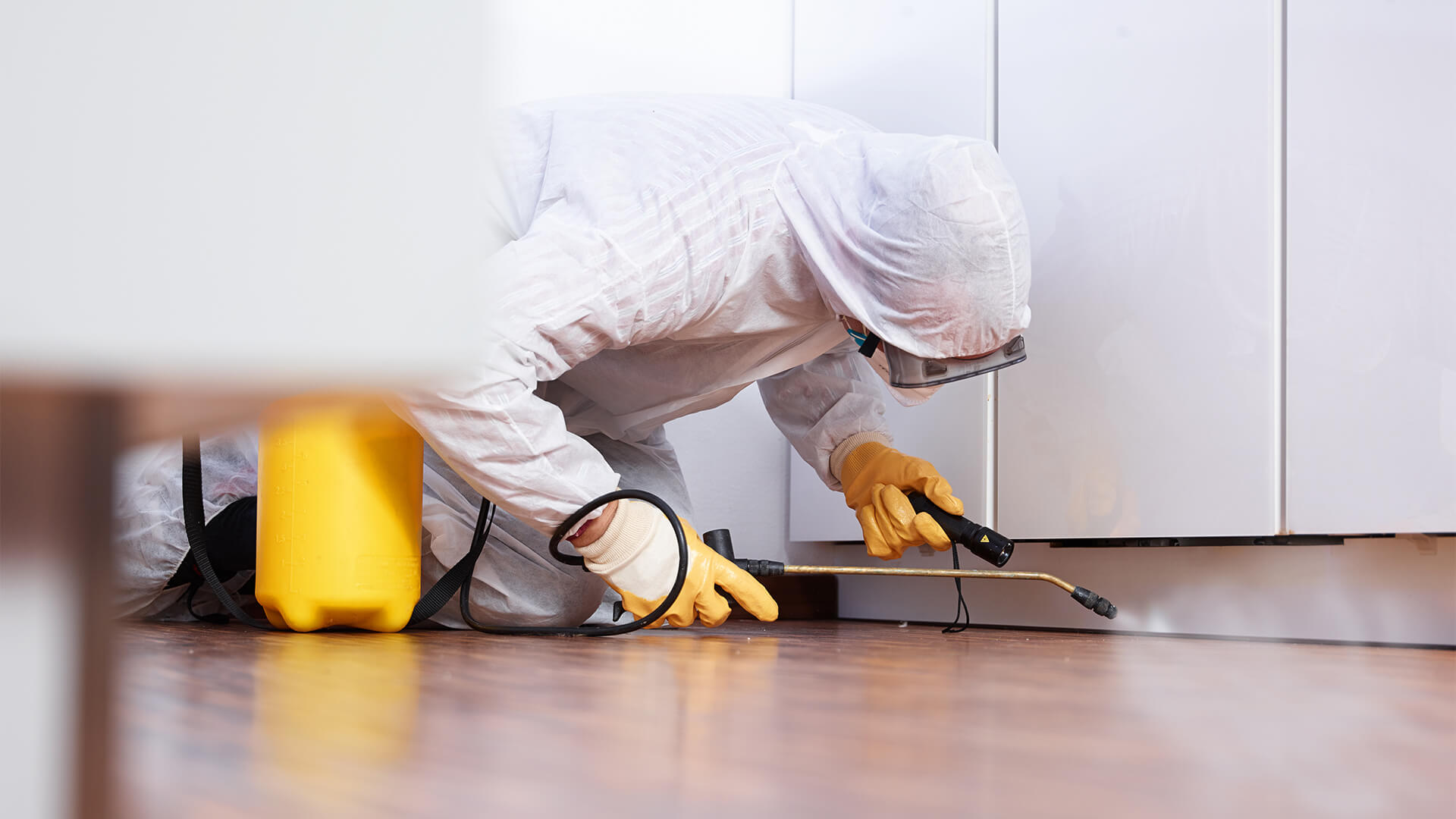Pest Control treatments to protect your home from infestations.
Eco-Friendly Pest Control Approaches for Handling Wild Animals in Urban Locations
Urban areas commonly locate themselves at the intersection of human activity and wild animals, bring about unique difficulties in bug monitoring. Environment-friendly strategies emphasize sustainable coexistence, utilizing methods such as environment modification and all-natural repellents to mitigate human-wildlife conflicts. These techniques not just secure the setting yet additionally enhance community engagement in wildlife management. As metropolitan populations continue to grow, comprehending the dynamics of wildlife interactions becomes increasingly important. What ingenious techniques can be executed to guarantee both environmental balance and urban safety? Exploring this question discloses an engaging landscape of possible options.
Comprehending Urban Wildlife Dynamics
Recognizing Urban Wildlife Characteristics is vital for creating efficient and green insect control strategies. Urban areas are progressively becoming environments for various wild animals species, driven by variables such as habitat fragmentation, food schedule, and human infringement. Recognizing these characteristics permits a nuanced strategy to pest management that aligns with eco-friendly principles.
Urban wild animals frequently consists of species such as raccoons, squirrels, and birds, which adapt to city settings, finding particular niches in green areas, parks, and even houses. Their visibility can result in disputes with people, especially when they manipulate human resources for food and shelter. Recognizing the habits and environmental duties of these species notifies approaches that decrease unfavorable interactions while promoting biodiversity.
Additionally, recognizing the interdependencies within city ecosystems assists in recognizing vital areas for environment preservation and remediation. This understanding adds to the development of integrated bug monitoring (IPM) techniques that think about the environmental equilibrium, therefore reducing dependence on damaging chemicals. By promoting conjunction in between human beings and city wild animals, cities can produce much healthier settings that profit both homeowners and neighborhood ecological communities, leading the way for sustainable urban living.
Natural Repellents and Deterrents
Natural repellents and deterrents offer a sustainable option to traditional bug control techniques by using the power of nature to maintain undesirable types at bay. These green remedies typically make use of plant-based active ingredients, crucial oils, and various other normally happening substances that discourage bugs without harming the environment.
One reliable all-natural repellent is peppermint oil, which is understood to repel rats and insects. Its strong aroma is undesirable to numerous pests, making it a popular choice for urban setups. Vinegar and citrus peels can offer as deterrents, as their strong odors are commonly unappealing to numerous wild animals.
In addition, diatomaceous planet is a natural powder that can be spread out in areas vulnerable to bug task, effectively dehydrating and hindering bugs without positioning dangers to non-target species. Moreover, garlic sprays and neem oil are acknowledged for their capacity to fend off a large range of pests, including both pests and bigger wild animals.
Carrying out these natural repellents not only minimizes dependence on chemical pesticides yet likewise advertises a much healthier metropolitan environment, cultivating an extra well balanced conjunction between human beings and wild animals. By making use of these strategies, city locations can successfully handle pest populaces while lessening ecological impact.
Environment Adjustment Techniques
Effective habitat modification methods play a crucial role in sustainable insect monitoring by modifying the atmosphere to make it less helpful to pest infestations. By recognizing the ecological dynamics of urban areas, property owners can carry out calculated modifications that prevent insects while advertising biodiversity.
(Tentless Termite Treatment)One key technique involves maintaining appropriate cleanliness. This includes routine waste removal, safeguarding trash containers, and removing standing water to lower breeding websites for insects and rodents. Furthermore, landscaping methods such as selecting indigenous plants can enhance ecological equilibrium, providing environments for helpful microorganisms while reducing resources for bugs.
An additional important technique is to secure entry points in buildings. Checking and fixing splits in structures, walls, and windows can substantially decrease bug access. Furthermore, creating physical obstacles, such as fences or plant buffers, can prevent wild animals movement right into human-inhabited locations.
Integrated Pest Administration Practices
Structure upon environment adjustment techniques, incorporated parasite management (IPM) methods supply an alternative approach to managing insect populations while lessening ecological influence. IPM incorporates various methods, consisting of organic, social, mechanical, and chemical controls, to achieve effective insect administration.
Organic control includes the introduction of natural predators or parasites to decrease parasite populations. Social methods, such as plant turning and hygiene, interfere with pest life cycles and decrease their environments - Pest Control. Mechanical controls, like catches and barriers, supply immediate relief from pest pressures without chemical treatment
Chemical controls are utilized as a last hotel, concentrating on targeted applications that limit damage to non-target species and the setting. The selection of eco-friendly pesticides, when required, is essential to the IPM framework. Additionally, checking bug populaces and analyzing prospective damages assists notify decision-making, guaranteeing that treatments are prompt and effective.
Area Participation and Education

(Rat Control)Workshops and informational sessions can outfit citizens with expertise regarding native species, environment conservation, and effective non-toxic parasite monitoring techniques. Collaboration with colleges, local companies, and federal government companies better improves educational outreach, making sure that essential information reaches varied target markets.
Additionally, community-led efforts, such as neighborhood clean-up days and habitat repair tasks, not only advertise biodiversity but also reinforce area ties. Pest control service. By urging locals to share their experiences and observations, neighborhoods can create targeted strategies that resolve specific neighborhood insect issues
Incorporating feedback from locals into pest management plans makes it possible for an extra receptive and flexible strategy to wild animals obstacles. Ultimately, informed and involved areas are essential to accomplishing long-term success in eco-friendly pest control, resulting in healthier metropolitan settings that value both human and eco-friendly needs.

Final Thought
In verdict, green parasite control comes Pest Control in Port Charlotte close to offer sustainable remedies for taking care of metropolitan wildlife. By prioritizing habitat modification, utilizing natural repellents, and implementing incorporated parasite management practices, communities can cultivate a harmonious conjunction with local animals.